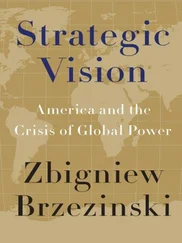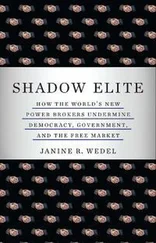Lemkin was not the only European who had learned from the past. So, too, had Hitler. Six years after the Madrid conference, in August 1939, Hitler met with his military chiefs and delivered a notorious tutorial on a central lesson of the recent past: Victors write the history books. He declared:
It was knowingly and lightheartedly that Genghis Khan sent thousands of women and children to their deaths. History sees in him only the founder of a state…The aim of war is not to reach definite lines but to annihilate the enemy physically. It is by this means that we shall obtain the vital living space that we need. Who today still speaks of the massacre of the Armenians? 16
A week later, on September 1, 1939, the Nazis invaded Poland. In 1942 Hitler restored Talaat’s ashes to Turkey, where the Turkish government enshrined the fallen hero’s remains in a mausoleum on the Hill of Liberty in Istanbul. 17
Flight
If Lemkin had been in a position to utter a public “I told you so” in September 1939, he would have done so. But like all Jews scrambling to flee or to fight, Lemkin had only survival on his mind. Six days after the Wehrmacht’s invasion of Poland, he heard a radio broadcast instructing able-bodied men to leave the capital. Lemkin rushed to the train station, carrying only a shaving kit and a summer coat. When the train was bombed and set aflame by the German Luftwaffe, Lemkin hid and hiked for days in the woods nearby, joining what he called a “community of nomads.” He saw German bombers hit a train crammed with refugees and then a group of children huddling by the tracks. Three of his traveling companions were killed in an air raid. Hundreds of Poles marching with him collapsed of fatigue, starvation, and disease.
Under the terms of the secret Soviet-German deal known as the Molotov-Ribbentrop pact, the Soviets invaded Poland just after the Germans, and the country was divided into a Soviet and a German zone. Lemkin kept on the move until November 1939, when he wound up in a small town in Poland’s Soviet-occupied half and persuaded a devout Jewish family to shelter him for a few days. There, despite the warmth and generosity of his hosts, Lemkin was frustrated by their passivity and wishful thinking in the face of Hitler’s brutality.
“There is nothing new in the suffering of Jews, especially in time of war,” the man of the house, a baker, insisted. “The main thing for a Jew is not to get excited and to outlast the enemies. A Jew must wait and pray. The Almighty will help. He always helps.”
Lemkin asked the man if he had heard of Mein Kampf . The man said he had heard of it but that he did not believe Hitler would follow through on his threats.
“How can Hitler destroy the Jews, if he must trade with them?” the baker asked Lemkin. “I grant you some Jews will suffer under Hitler, but this is the lot of the Jews, to suffer and to wait.”
Lemkin argued that this was not like other wars. The Germans were not interested only in grabbing territory. Hitler wanted to destroy the Jews completely.
“In the last war, 1915–1918, we lived three years under the Germans,” the baker said. “It was never good, but somehow we survived. I sold bread to the Germans; we baked for them their flour. We Jews are an eternal people, we cannot be destroyed. We can only suffer.” 18
This disbelief, this faith in reason, in human contact, in commerce, convinced millions to remain in place and risk their fates. Only a small number of Jews had Lemkin’s foresight. The vast majority expected persecution and maybe even the occasional pogrom, but not extermination.
Lemkin studied the man carefully and reflected:
Many generations spoke through this man. He could not believe the reality of [Hitler’s intent], because it was so much against nature, against logic, against life itself, and against the warm smell of bread in his house, against his poor but comfortable bed…There was not much sense in disturbing or confusing him with facts. He had already made up his mind. 19
Lemkin took a train to eastern Poland, where his brother and parents lived. He begged them to join him in flight. “I have been living in retirement for more than ten years because of my sickness,” his father said. “I am not a capitalist. The Russians will not bother me.” His brother chimed in, “I gave up my store and registered as an employee before it was taken over by the new government. They will not touch me either.” Lemkin later remembered: “I read in the eyes of all of them one plea: do not talk of our leaving this warm home, our beds, our stores of food, the security of our customs…We will have to suffer, but we will survive somehow.” He spent the next day feeling as if he was living their funerals while they were still alive. “The best of me was dying with the full cruelty of consciousness,” he noted. 20
Before Lemkin left Wolkowysk, his mother lectured him on the importance of rounding out his life. She reminded him that his goal of writing a book a year was not as important as developing “the life of the heart.” Lemkin, who had not dated, joked that maybe he would have more luck in his new capacity as a nomad than he had had “as a member of a sedentary society.” He told his parents that he planned to travel first to Sweden and then, he hoped, to the United States, because that was where decisions were made.
After waving goodbye to his parents with a determined casualness, Lemkin headed towardVilnius, Lithuania, a town bustling with refugees. He spent what was left of his money on two telegrams. The first the fastidious scholar sent to Paris to inquire whether his publisher had received a manuscript that he had mailed a week before the war’s outbreak. The second, a plea for refuge, he dispatched to a friend, the minister of justice in Sweden. 21As he awaited notification from the Swedish consulate, he visited with various Jewish intellectuals around town. None planned to leave.
The life of the vagrant was not agreeing with Lemkin. Although his acquaintances were generous, he felt his personality “disintegrate” as apathy set in. “There were three things I wanted to avoid in my life:to wear eyeglasses, to lose my hair, and to become a refugee,” he wrote. “Now all these three things have come to me in implacable succession.” 22He busied himself by buying a dictionary and learning Lithuanian from the daily newspaper. But only the arrival of a package from his publisher in France cheered him up. The publisher enclosed galleys of his latest book on international finance regulations, as well as copies of Lemkin’s 1933 draft law banning acts of barbarity and vandalism. In his newfound free time, the lawyer immediately set out to improve them.
Lemkin’s request for refuge was granted, and he traveled to neutral Sweden by ship in February 1940. He was able to lecture in Swedish after just five months, an achievement he credited with enabling him to “rise spiritually from the ‘refugee’ fall of modern man.” 23While lecturing on international law at the University of Stockholm, he began assembling the legal decrees the Nazis had issued in each of the countries they occupied. He relied upon a corporation whose legal affairs he had once managed from Warsaw—as well as Swedish embassies around Europe, Red Cross delegations, and German occupation radio—to gather the official gazettes from any branches that remained open in the occupied countries. In compiling these laws, Lemkin hoped he would be able to demonstrate the sinister ways in which law could be used to propagate hate and incite murder. He also hoped decrees and ordinances in the Nazis’ own words would serve as “objective and irrefutable evidence” for the legions of disbelievers in what he called the “blind world.” 24
Lemkin was desperate to leave the libraries of neutral Stockholm and get to the United States, which he had idealized. Thanks to a professor at Duke University with whom he had once translated the Polish criminal code into English, Lemkin secured an appointment to the Duke faculty to teach international law. He flew to Moscow, took the Trans-Siberian railroad to Vladivostok, and then picked up a small boat, which he and the other refugees called the “floating coffin,” to the Japanese port of Tsuruga. He then took a bigger boat from Yokohama to Vancouver and on to Seattle, the U.S. port of entry, where he landed on April 18, 1941.
Читать дальше












